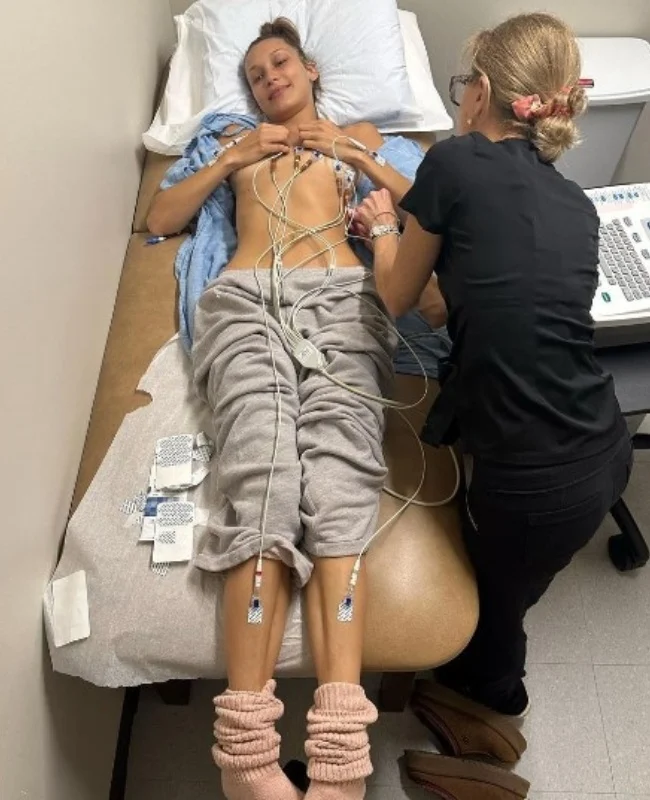Lyme disease, a bacterial infection transmitted by infected black-legged ticks, prompts varied symptoms in humans. Given the potential resemblance of these symptoms to those of other illnesses, seeking testing upon suspicion of infection is crucial.
CUPERTINO, CALIFORNIA | NOW THEN DIGITAL — Lyme disease, stemming from bacterial infection, transmits to humans via bites of infected black-legged ticks. Its symptoms may resemble other illnesses, underscoring the necessity of testing if infection is suspected.
How to Test for Lyme Disease
A prevalent diagnostic method is the blood test. This assay searches for antibodies in the blood, indicative of an immune response targeting the Lyme disease-causing bacteria.
The Centers for Disease Control and Prevention (CDC) endorse a two-step testing approach: commencing with an ELISA test and, if the ELISA result is positive or inconclusive, proceeding to a Western blot test. Notably, both tests employ a single blood sample.
Additionally, at-home Lyme disease test kits exist. Generally, these kits entail obtaining a blood droplet from one’s fingertip and sending it to a laboratory for analysis. Nonetheless, consulting a healthcare provider before opting for an at-home test is advised.
This precaution is vital, as certain at-home tests may employ unverified lab methodologies, thus potentially yielding inaccurate outcomes.
It’s crucial to acknowledge that Lyme disease tests aren’t infallible. Consequently, even if test results are negative while symptoms suggest Lyme disease, a healthcare provider might initiate antibiotic treatment.
For those harboring suspicions of Lyme disease, seeking swift medical attention holds paramount importance.
What Are the Symptoms of Lyme Disease?

The symptoms of Lyme disease, a bacterial infection transmitted through the bite of infected black-legged ticks, can closely resemble those of other illnesses. Therefore, testing becomes crucial if infection is suspected. The manifestation of Lyme disease symptoms varies based on the infection’s stage.
The manifestation of Lyme disease symptoms hinges on the infection’s stage. During the initial 3 to 30 days after a tick bite, early signs commonly include:
- A rash resembling a bull’s-eye or a single expanding circle originating from the tick bite site. This rash is typically warm but not itchy or painful.
- Fever.
- Headache.
- Profound fatigue.
- Stiffness in joints.
- Muscular discomfort.
- Swollen lymph nodes.
When left untreated, the infection can disseminate, yielding more severe symptoms that encompass:
- Development of multiple rashes on different body parts.
- Neck stiffness or pain.
- Arthritis marked by intense joint swelling and pain, particularly in the knees and larger joints.
- Intermittent discomfort affecting tendons, muscles, joints, and bones.
- Heart palpitations or irregular heartbeat (Lyme carditis).
- Episodes of dizziness or breathlessness.
- Inflammation affecting the brain and spinal cord.
- Nerve-related pain.
- Occurrence of shooting pain, numbness, or tingling in the hands or feet.
It is vital to acknowledge that Lyme disease symptoms can overlap with those of other ailments. Hence, if suspicion of infection arises, pursuing medical testing becomes imperative. Should you harbor concerns about Lyme disease, expedient medical attention is paramount.

What Is the Cause of Lyme Disease
Lyme disease is primarily caused by the bacterium Borrelia burgdorferi, and in rare cases, Borrelia mayonii can also be responsible. The transmission of this illness occurs when infected black-legged ticks bite humans.
Deer ticks, also known as black-legged ticks, are the carriers of Lyme disease. These specific ticks are commonly found in regions such as the Northeast, Mid-Atlantic, Upper Midwest, and the Pacific coast—particularly northern California. Lyme disease primarily affects states within the upper Midwest and northeastern/mid-Atlantic areas.
Lyme disease is caused by a bacterium known as Borrelia burgdorferi or B. burgdorferi. These bacteria can be carried by black-legged ticks, also referred to as deer ticks.
How Is It treated?

Lyme disease treatment involves antibiotics, typically doxycycline or amoxicillin. The treatment duration varies based on infection stage, usually lasting two to four weeks. Pregnant individuals also receive treatment; however, there’s no evidence of fetal infection transmission.
Untreated Lyme disease can escalate symptoms, underscoring the need for prompt medical attention upon suspicion of infection. Some patients may endure persistent pain, fatigue, or cognitive issues post-treatment. The understanding of these symptoms is nascent, requiring more research.
The Centers for Disease Control and Prevention (CDC) emphasizes early diagnosis and antibiotic treatment for Lyme disease, aiding rapid and complete recovery. Nonetheless, some individuals may face lingering symptoms, necessitating further research.
“Early diagnosis and proper antibiotic treatment of Lyme disease is important. Patients treated with antibiotics in the early stages of the infection usually recover rapidly and completely.” the CDC advises.
Untreated cases may worsen, warns the Mayo Clinic, leading to severe symptoms over weeks or months. While a U.S. Lyme vaccine is absent, ongoing testing is in progress.
Success Rate of Treating Lyme Disease With Antibiotics
Lyme disease treatment relies on antibiotics as the primary approach. Commonly prescribed antibiotics encompass doxycycline, amoxicillin, and cefuroxime axetil. For early-stage Lyme disease, short oral courses of doxycycline or amoxicillin resolve most cases.
In complex situations, the National Institute of Allergy and Infectious Diseases (NIAID) states that Lyme disease can typically be effectively managed with three to four weeks of antibiotic therapy. Treatment duration hinges on infection stage, generally spanning two to four weeks.
Antibiotics exhibit a high success rate in treating Lyme disease. According to The National Center for Biotechnology Information, patients treated for 10 days or less enjoy a 99.0% 2-year survival rate free from treatment failure.
Nonetheless, some patients may experience lingering pain, fatigue, or cognitive issues post-treatment. Understanding persistent symptoms in Lyme disease is evolving, necessitating further research for enhanced treatment, management, and support.
Editor’s Note: Please contact press@nowthendigital.com if you find any of the content to be inaccurate or outdated.

















